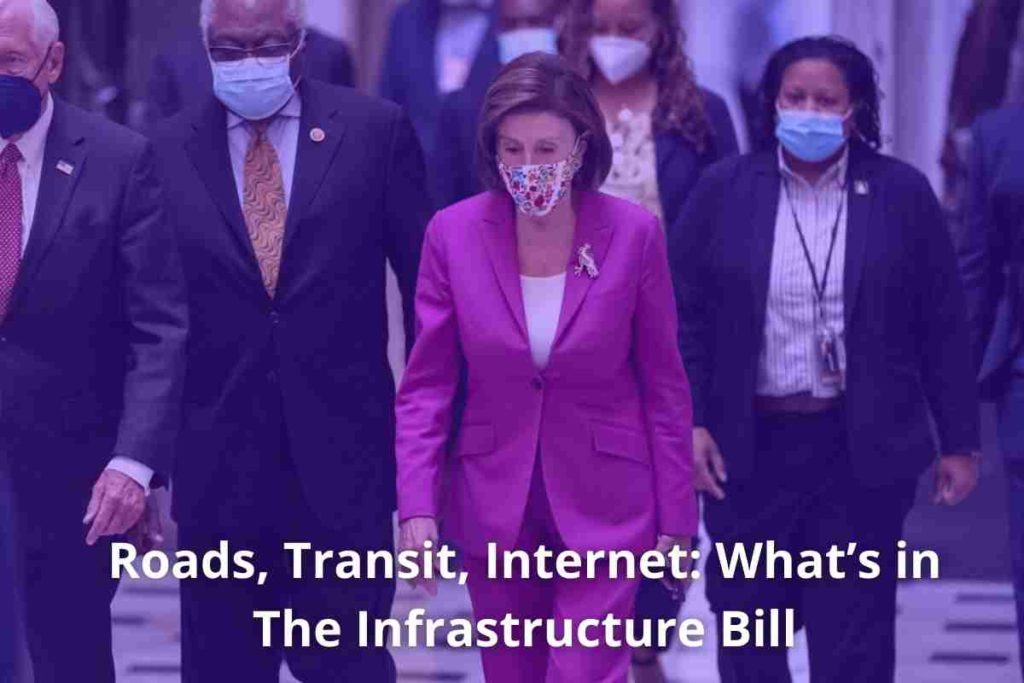This law will help make our roads, bridges, ports, rail transit, safe water, and power grids. It will also help give people access to the internet. On Friday night, the House passed a bipartisan plan. On Saturday, Biden said he would wait until Congress comes back from recess to sign it.
The new law will reach almost all of the country. The president has said that it is as important as building the railroad and the highway system. White House projections say that the investments will create about 2 million jobs each year for ten years.
The bill passed the House of Representatives on a 228-206 vote. This is good because it means that people want to help people and they will be able to do more work. They attempted to make the bill bigger, but some members of the House did not agree with this plan.
The House voted to pass legislation on a 69-30 vote. In August, they passed the legislation after rare bipartisan negotiations. Thirteen Republicans voted for the legislation. Democrats could have enough votes to override defections from progressives.
Follow us on Twitter
This is a breakdown of the bill:
ROADS AND BRIDGES
The bill would give $110 billion to fix America’s highways, bridges, and roads. There are 173,000 miles of American highways that need work. And 45,000 bridges need work too. The bill is the biggest investment in bridges since the national highway system was built.
PUBLIC TRANSIT
This bill would give $39 billion to public transit. This money would help expand transportation systems, improve accessibility for disabled people and provide money to state and local governments so they can buy zero-emission buses. The Department of Transportation says a repair backlog of 24,000 buses, 5,000 rail cars, 200 stations, and thousands of miles of track and power systems.
PASSENGER AND FREIGHT RAIL
To help reduce the Amtrak maintenance backlog, which has grown worse since Superstorm Sandy, the bill would provide $66 billion to improve the rail service’s Northeast Corridor. That is less than what Joe Biden had wanted, but it will be the largest federal investment in passenger rail service since Amtrak was founded 50 years ago.
ELECTRIC VEHICLES
The bill would spend $7.5 billion on electric car chargers, which are needed to help the environment’s safety. The bill would also spend $5 billion for electric school buses and other vehicles, which will reduce the number of school buses that run on diesel fuel.
INTERNET ACCESS
The legislation would spend $65 billion to improve internet services for rural areas, low-income families, and tribal communities. Most of the money would be given to states in grants.
MODERNIZING THE ELECTRIC GRID
This bill spends $65 billion to improve the reliability and resiliency of power. It also invests more in cleaner sources of electricity like hydrogen that are not harmful to the environment.
AIRPORTS
The bill spends $25 billion to fix runways, gates, and taxiways at airports. The bill also improves air traffic control towers that are old.
WATER AND WASTEWATER
This bill has a lot of money to spend on water and wastewater. It will spend $55 billion. It has $15 billion for replacing old pipes with lead pipes and $10 billion to remove chemical substances from the water.
PAYING FOR IT
The five-year spending plan would be paid by taking $210 billion from unspent relief money and $53 billion from unemployment insurance. The plan also takes other smaller pots of money, like petroleum reserve sales and spectrum auctions for 5G services.
Also, Read Oregon to Receive $3.4 Billion from Federal Infrastructure Bill
Contents





